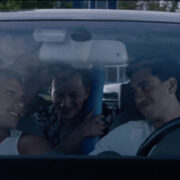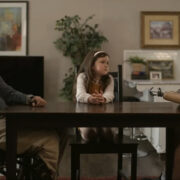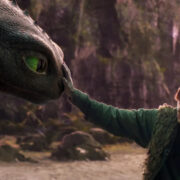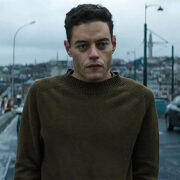How Wes Anderson Is Influenced By The Peanuts
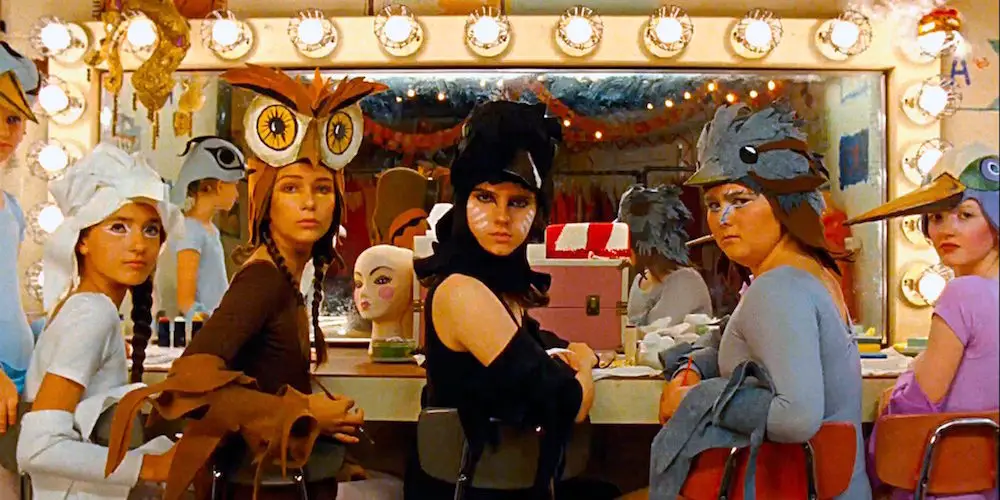
Amanda Mazzillo is a writer with an MFA in Dramatic…
A distinctive and imaginative style plays a part in every Wes Anderson film. His influences range from French New Wave films to Jacques Cousteau‘s books and films. One influence in particular intrigues me: the Peanuts specials directed by Bill Melendez. This influence sometimes gets overlooked, but it is one of the most prominent throughout Wes Anderson‘s career.
His films have all included subtle references to Peanuts. They often included more detailed ones as well. The characters of Peanuts represent children and childhood in a way that does not shy away from exploring difficult and dark topics. Many Peanuts specials dealt with depression in a way children could relate to, which helped them understand their own feelings.
Suzy and the Little Red-Haired Girl
Moonrise Kingdom is the most faithful interpretation of the spirit of Peanuts. It follows two children, Suzy and Sam (Kara Hayward and Jared Gilman) as they travel away from society and the parental influences in their lives. Both Suzy and Sam feel unwanted and alone at home, which makes their choices to run off together feel real and not out of the ordinary for 12 year old kids.
In Peanuts, the focus is on the children, to the point the adults do not speak in a way the audience can understand. In Moonrise Kingdom, the main focus is also on the children, with the adults as secondary characters, whose purpose in the film is to move the children’s story forward. In addition, the music in the film is heavily performed by children. The soundtrack includes children’s opera, children’s choir, as well as instructional children’s music.
Like both other films I will discuss, this film incorporates children’s theater, which shows up occasionally in Peanuts, primarily in the form of holiday performances. The young characters in these films are actors and playwrights. They are children exploring their imagination, which is a central element of the Peanuts world. In Moonrise Kingdom, a play is what brings Sam and Suzy together initially.
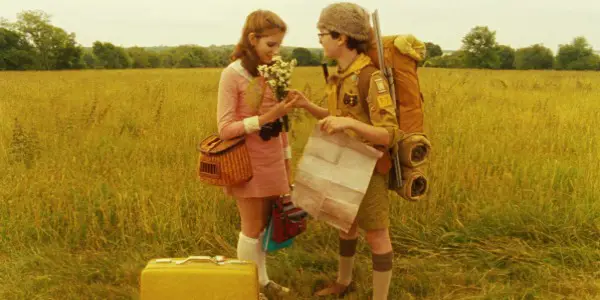
Sam is introduced through the Khaki Scouts troop, which resembles Snoopy’s Beagle Scouts in multiple ways. The scene introducing these characters in Moonrise Kingdom tracks across the camp site, as if it extends endlessly. This camera technique creates a more cartoonish landscape for the scene, making it even more similar to the Beagle Scouts in Peanuts. The colors and style of the uniforms also very closely match the ones seen in Snoopy’s troop.
This film incorporates the Peanuts theme of addressing real issues in children. Peanuts shows children dealing with emotions and problems normally left for adults to take care of. Suzy’s parents are reading books on how to deal with troubled children, which makes her feel even more alone when she discovers this. Sam is being sent around to foster homes, never feeling like he belongs. His Khaki Scout troop doesn’t even know he’s an orphan, even though they have been around him more than anyone else.
Peanuts commonly shows the children talking about their feelings, using the word depressed more than children are supposed to. Peanuts might be about kids being kids, but it is also about the sadness that comes with life, even if adults are removed. Peanuts shows that children understand more than adults expect them to. Wes Anderson takes this melancholic theme of childhood to heart in all of his films.
In addition to the color palette being similar to Peanuts, the characters wear costumes heavily influenced by Peanuts. Suzy’s dress looks remarkably like the dress the Little Red-Haired Girl wears in It’s Your First Kiss, Charlie Brown. Sam’s outfit resembles the Beagle Scouts, which were a prominent feature throughout the comic strips and cartoon specials.
Margot’s Theme and Childhood Sadness
The Royal Tenenbaums is another wonderful example of children being the focus of a Wes Anderson story, to the extent that they grow up largely removed from the adults in their life. These characters all experience different reactions to growing up, but they all share traits which came from growing up in this specific family dynamic. Margot, Richie, and Chas (Gwyneth Paltrow, Luke Wilson, and Ben Stiller) are the center of the story, especially their relationship with their father, Royal.
Peanuts would not go as deep into dysfunction as the characters do in this film, but that underlying sadness exists in both Peanuts and The Royal Tenenbaums. Margot, Richie, and Chas all have to deal with emotional problems and they all do this in vastly different ways. Margot’s theme music in this film is the Charlie Brown Christmas version of, “Christmas Time Is Here,” which plays multiple times throughout the film during scenes where her character is prominent. Musical cues like this helps the audience connect the siblings in this film to the children of Peanuts, who voice their concerns about depression.
Visually, this film evokes a simpler time, similarly to the time Peanuts originated. Margot, Richie, and Chas all dress as their child selves throughout the film, which works well to show how they still feel like children inside. They all move back in their childhood home as a way to figure out who they are and where they should be going in life. This film feels as if Peanuts characters grew up and finally started to hear their parents speak, realizing what they might have ignored in the past.
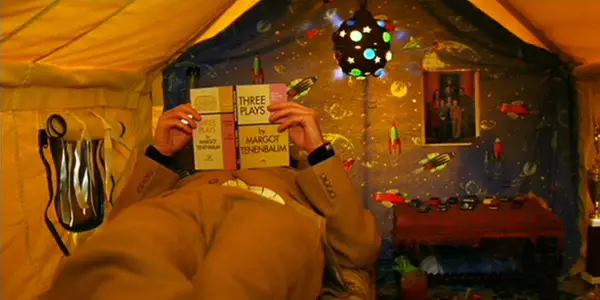
Like Moonrise Kingdom, this film also features a dog, who seems somewhat inspired by Snoopy. The dog in this film is seen as a very close member of the family. He is also seen as an animal that does not shy away from being involved in adventures.
Children’s theater is also a part of The Royal Tennenbaums especially in regards to Margot. In her backstory, we see her writing and performing plays with her siblings. We also see her father not appreciate the plays because they are childish. She continues to be a playwright, but she has lost her way and wants to get back to how she felt when she wrote plays as a child. She wants acknowledgment from her father, who disregarded her plays.
This film also has a level of obsessive love between Richie and Margot. In Peanuts, Charlie Brown’s love for the Little Red-Haired Girl affects his performance in many activities, mainly kite flying. In The Royal Tenenbaums, Richie loses an important tennis match because he sees Margot with her husband, knowing their relationship is now more doomed than it was before.
Snoopy and Charlie Brown: Daydreaming and Determination
Wes Anderson’s Rushmore most closely relates to the characters of Peanuts, especially Charlie Brown and Snoopy. We see various characteristics of Charlie Brown and Snoopy expressed within Max Fischer (Jason Schwartzman). Charlie Brown has always come across as a character who is primarily concerned with impressing other people. He is not that great at everything he tries to do, much like Max being involved in so many different clubs, making it difficult for him to be fully involved with anything.
Max also shares a few traits with Snoopy. They both daydream about being someone better and doing something others will appreciate. When Max puts his mind to one task at a time, he usually succeeds with his goal, but it gets muddled when he tries too many different things at once.
This is also the case with Charlie Brown, who is able to fly a kite and impress the Little Red-Haired Girl, when it is his only objective. When Charlie Brown worries about everyone else, he fails. When Max worries about impressing everyone through deception, it never works out for him. When Max put his mind to making sure Latin remains a course at Rushmore, in order to impress Rosemary Cross (Olivia Williams) he was able to succeed.
As mentioned in both previous films, theater plays a part here as well. Max was originally accepted into Rushmore because he wrote a well-received play. Throughout the film we see him directing and starring in plays with a group of friends, which evolves to include Dirk Calloway, Margaret Yang, and Magnus Buchan (Mason Gamble, Sara Tanaka, and Stephen McCole). This mirrors all the times Charlie Brown and his friends have performed in holiday productions together.
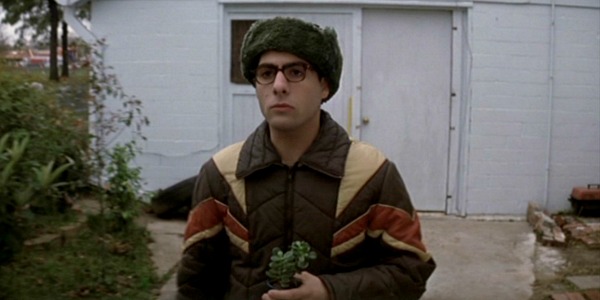
These two characters also have a similar family. We do not ever hear Charlie Brown’s dad in Peanuts, but we know he’s a barber. This helps us understand the type of family life he might have. In Rushmore, Max’s dad is also a barber, but he tries to hide this as another way of impressing people. Once he finally comes clean and tells people what his dad really does, he begins to have a better understanding of himself. He develops better friendships once everything is out in the open.
The Peanuts version of Hark the Herald Angels Sing is playing when Max introduces Herman Blume (Bill Murray) to his father and makes it known that his father is not a doctor. This song plays when Max finally starts telling the truth and stops hurting others just to help himself. Having a Peanuts song play a part in a scene of character development makes the connections between the two seem vastly more important.
Like the other films I mentioned, Rushmore also shows a certain level of sadness in its younger characters. When we see Max visiting his mother’s headstone, we begin to understand the character more, by seeing what he has gone through in his life.
Later on we see Max, unsure of who he is, carrying a tiny plant in the middle of winter. At this point, he is still just wearing another costume, pretending to be exactly like his father. This visually mirrors the scene of Charlie Brown carrying his pathetic Christmas tree. This plant and this Christmas tree are signs of growth within the characters and the path towards accepting something, even if it isn’t exactly what you wanted originally.
Conclusion
Wes Anderson has an understanding of the characters and ideals behind Peanuts, which works to create a unique style encompassing childlike wonder with films aimed more towards an adult audience. This blend of child-focused stories and adult worlds works well to craft characters we do not want to forget. Aesthetically, his films evoke a simpler time, much like the Peanuts specials and the comics they came from. Bill Melendez and Wes Anderson both explore inherent sadness through simple and focused stories about children and their families.
What influences do you see in Wes Anderson’s work? Do you think Peanuts had a major impact on the style we see throughout all of his films? Please post your thoughts in the comments.
Does content like this matter to you?
Become a Member and support film journalism. Unlock access to all of Film Inquiry`s great articles. Join a community of like-minded readers who are passionate about cinema - get access to our private members Network, give back to independent filmmakers, and more.
Amanda Mazzillo is a writer with an MFA in Dramatic Writing from SCAD and a BA in Writing & Linguistics and Film Studies minor from Georgia Southern University. She enjoys writing comedy and exploring all forms of media. Her Twitter name is a bad pun: @mazzillofirefox




